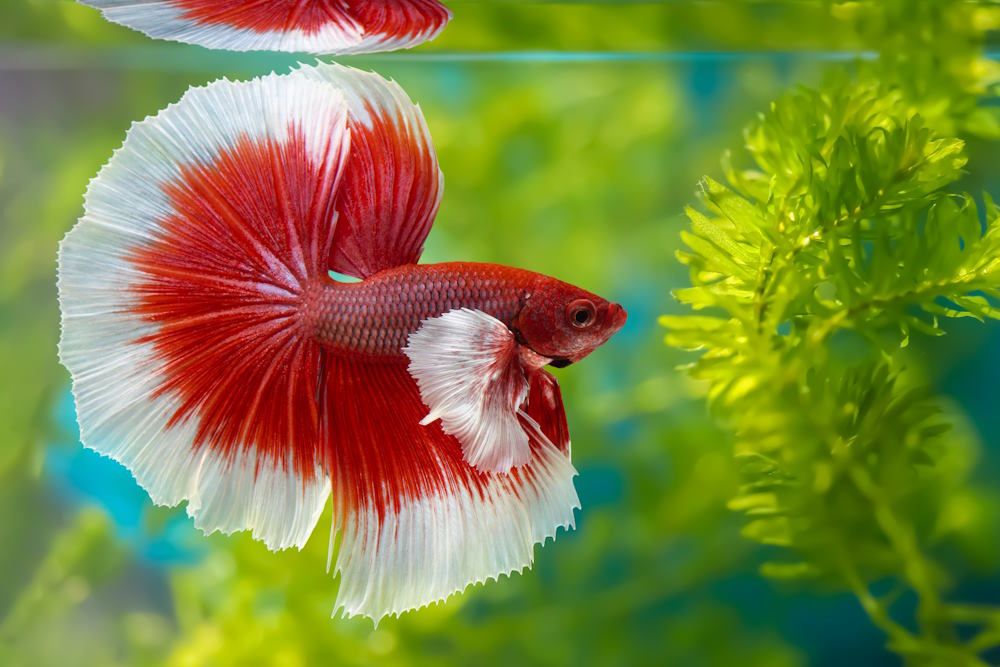Betta Fish Treatment: Essential Tips for a Healthy and Pleased Family Pet
Betta Fish Treatment: Essential Tips for a Healthy and Pleased Family Pet
Blog Article
How to Reproduce Betta Fish Successfully: Specialist Methods and Insights for Hobbyists Looking to Increase Their Betta Collection
Breeding Betta fish calls for a nuanced understanding of genetics and ecological conditions, making it crucial for hobbyists to come close to the process with both persistance and care. Producing an optimal reproduction environment, choosing the best sets, and observing the complexities of their courtship actions are foundational actions that can significantly affect the outcome. Additionally, the succeeding care of the fry is essential for ensuring their healthy and balanced advancement. As we explore these key elements, it comes to be clear that effective reproduction is not almost the first pairing but encompasses a broader approach that benefits mindful consideration.
Recognizing Betta Fish Genes
Understanding the genes of Betta fish is critical for successful breeding, as it influences traits such as shade, fin form, and habits. Betta fish display a diverse selection of colors and patterns, greatly determined by their hereditary make-up.
Along with coloration, fin morphology is one more considerable element of Betta genes (betta fish). The shape and dimension of fins are affected by numerous genetics, consisting of those that determine whether the fins are brief, long, or veil-shaped. Comprehending these hereditary variants aids breeders anticipate the phenotypic end results of their children
Additionally, behavior traits such as aggression and territoriality can likewise be affected by genetics. These actions play a crucial function in the reproducing procedure, as they can influence spawning success and the general temperament of the resulting fry. By comprehensively recognizing these genetic concepts, dog breeders can make educated choices, inevitably boosting their reproduction programs and attaining desirable results.
Preparing the Breeding Atmosphere
Creating an optimal reproduction setting is vital for the effective reproduction of Betta fish. The first step in preparing this setting is to select an appropriate breeding tank, preferably ranging from 5 to 10 gallons. This size permits sufficient swimming room and the establishment of regions. The container ought to be geared up with a heating unit to maintain a steady temperature level between 78 ° F and 80 ° F, which is important for motivating spawning actions.
Next, consider using a sponge filter or an air stone to offer mild water flow without producing solid currents that can emphasize the fish. It is necessary to install plants or reproducing cones to supply concealing areas and promote convenience for the lady during the spawning process. Floating plants, such as Java moss or water sprite, can additionally create a more natural surroundings while facilitating bubble nest structure by the male.
Prior to introducing the breeding sets, make certain the water is conditioned and devoid of damaging chemicals, such as chlorine or heavy steels. betta fish. Normal water adjustments should be performed to preserve ideal water top quality, improving the opportunities of successful breeding. With these prep work in area, the reproducing setting will support the health and health of both Betta fish
Choosing Reproduction Pairs
Picking the ideal breeding sets is essential for attaining successful Betta fish recreation. Healthy and balanced Betta fish exhibit vibrant shades, clear eyes, and energetic actions.
Personality is an additional vital consideration, as Betta fish are recognized for their aggressive nature. It is advisable to pick a male and woman that show suitable personalities to lessen tension during the breeding procedure. A tranquil man can motivate a smoother courtship, while a lady that is too hostile might disrupt the process.
Hereditary history likewise plays a substantial duty in the high quality of the offspring. Reproducing fish that are you can check here genetically diverse can minimize the threat of genetic health problems and improve the general vigor of the fry. It is helpful to investigate the lineage of both the male and lady, concentrating on desirable traits such as fin kind, shade patterns, and size.
The Breeding Refine
The reproduction process of Betta fish calls for mindful planning and interest to detail to make certain an effective result. It is crucial to prepare an appropriate reproduction tank, preferably a 5-10 gallon fish tank with a temperature level maintained at 78-80 ° F. The container needs to be outfitted with a heater, filter (preferably sponge type to prevent solid currents), and plenty of water plants for the woman to conceal.
Once the setting is established, present the picked reproducing set to the tank, enabling them to accustom. Observe their habits; the male will show sophisticated courtship rituals, including flaring his fins and developing a bubble nest. If the lady shows passion, she will certainly display vertical stripes showing preparedness for spawning.
When the woman is responsive, the set will involve in a mating embrace, throughout which the male fertilizes the eggs. Keeping ideal water conditions throughout this period is essential for the advancement of healthy Betta fry.
Taking Care Of Betta Fry

Feeding Betta fry is important, as they call for a diet regimen high in protein. At first, they can be fed infusoria or liquid fry food, transitioning to carefully smashed high-quality pellets as they grow. Feed tiny sections several times a day to motivate healthy and balanced development without straining the container with leftover food.

As they develop, monitor their development very closely and separate any kind of aggressive people to top article stop damage. By supplying a supporting environment and correct nutrition, enthusiasts can successfully increase Betta fry right into lively, healthy fish, eventually boosting their reproduction undertakings.
Final Thought
Successful Betta fish breeding requires thorough attention to genetic choice, environmental problems, and treatment original site for the fry. By comprehending the genes of Betta fish and preparing a proper reproduction setting, enthusiasts can boost the possibilities of creating dynamic, healthy offspring.
Report this page